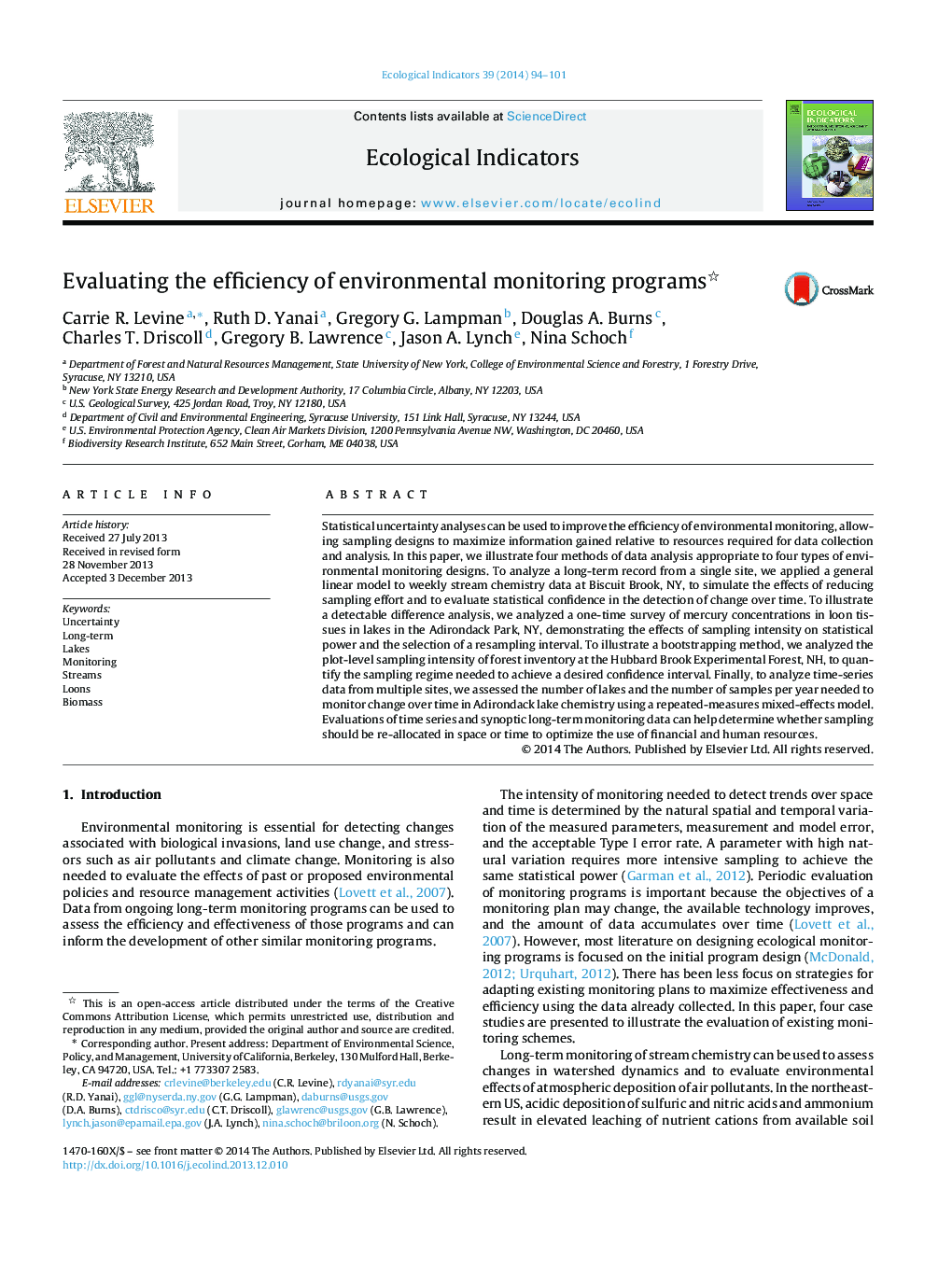| Article ID | Journal | Published Year | Pages | File Type |
|---|---|---|---|---|
| 6295408 | Ecological Indicators | 2014 | 8 Pages |
Abstract
Statistical uncertainty analyses can be used to improve the efficiency of environmental monitoring, allowing sampling designs to maximize information gained relative to resources required for data collection and analysis. In this paper, we illustrate four methods of data analysis appropriate to four types of environmental monitoring designs. To analyze a long-term record from a single site, we applied a general linear model to weekly stream chemistry data at Biscuit Brook, NY, to simulate the effects of reducing sampling effort and to evaluate statistical confidence in the detection of change over time. To illustrate a detectable difference analysis, we analyzed a one-time survey of mercury concentrations in loon tissues in lakes in the Adirondack Park, NY, demonstrating the effects of sampling intensity on statistical power and the selection of a resampling interval. To illustrate a bootstrapping method, we analyzed the plot-level sampling intensity of forest inventory at the Hubbard Brook Experimental Forest, NH, to quantify the sampling regime needed to achieve a desired confidence interval. Finally, to analyze time-series data from multiple sites, we assessed the number of lakes and the number of samples per year needed to monitor change over time in Adirondack lake chemistry using a repeated-measures mixed-effects model. Evaluations of time series and synoptic long-term monitoring data can help determine whether sampling should be re-allocated in space or time to optimize the use of financial and human resources.
Related Topics
Life Sciences
Agricultural and Biological Sciences
Ecology, Evolution, Behavior and Systematics
Authors
Carrie R. Levine, Ruth D. Yanai, Gregory G. Lampman, Douglas A. Burns, Charles T. Driscoll, Gregory B. Lawrence, Jason A. Lynch, Nina Schoch,
